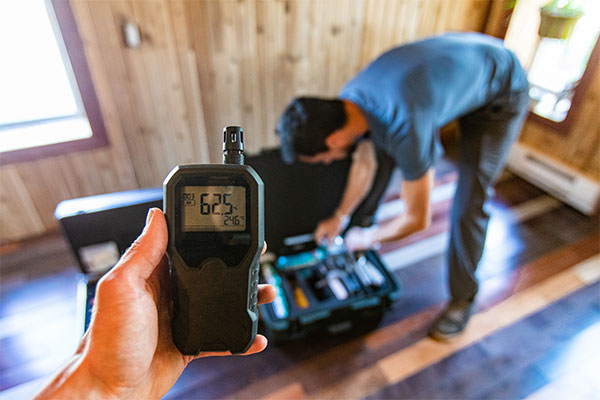
There’s an increased focus on health and wellness these days, and with people spending a significant portion of their lives inside homes and offices, understanding and improving indoor air quality has become a priority. With that in mind, we have the information you need to guide you through the process of performing indoor air quality testing, the benefits of such testing, and the benefits of incorporating an air purification system into your living space.
Understanding Indoor Air Quality Testing
Indoor air quality testing helps to identify and mitigate invisible threats that may lurk in the air within our homes, including pollutants such as dust, pollen, mold spores, and volatile organic compounds (VOCs) emitted from furniture, paints, and cleaning products. By conducting an indoor air quality test, homeowners gain insight into the pollutants present in their environment and can take informed steps to address them.
Indoor Air Quality Testing Process
The testing process often involves the use of specialized equipment and sensors capable of detecting a wide range of pollutants at various concentration levels. These devices can provide real-time data on the air quality in your home, allowing for immediate action when levels of certain pollutants rise above safe thresholds.
Performing an indoor air quality test usually has three key steps:
- The Right Equipment: There are many different air quality testing sensors available on the market. Primarily, they are designed to detect various types of pollutants. Some devices are geared towards identifying particulate matter (PM2.5 and PM10), while others are more focused on gasses and VOCs.
- Strategic Placement: Putting the air quality monitor in the right area of your home is crucial. Usually, this is an area of your home where you spend the most time, like the living room or bedroom.
- Interpreting the Results: Once set up, it’s best to run the monitor for about 24–48 hours. After this time period, a trained technician can review the collected data. These specialists possess the tools and knowledge to identify specific pollutants you may be unaware of.
While you can try it yourself, having an HVAC professional perform your air quality test ensures accuracy and expertise. Their insights can lead to optimized HVAC performance, enhanced comfort, and a healthier indoor environment. In short, by seeking a professional’s perspective, you’ll save both time and money in the long run.
The Importance of Clean Air
The best air purifiers provide a continuous defense against indoor air pollution by filtering out allergens and other harmful particles. This ultimately helps reduce the risk of respiratory issues, allergies, and other health problems associated with poor indoor air quality. Most importantly, clean air helps create and maintain a more comfortable atmosphere for you and your loved ones.
Keeping Your Home Healthy
Indoor air quality testing is an essential step towards ensuring a safe, secure living space. Understanding the specific pollutants in your home allows you to take informed actions to mitigate them. This can include improving ventilation, using non-toxic cleaning products, or addressing mold and dampness issues. Whether you’re installing a new air purification system or hiring a specialist, staying proactive is key.
Don’t forget — prioritizing your air quality means investing in the long-term health and well-being of your entire household. When it comes to protecting your home’s air quality, the HVAC professionals at H.H. Hovey Heating and Cooling are here to assist you. Reach out today to schedule air quality testing and learn more about the best air purification systems for your home.










